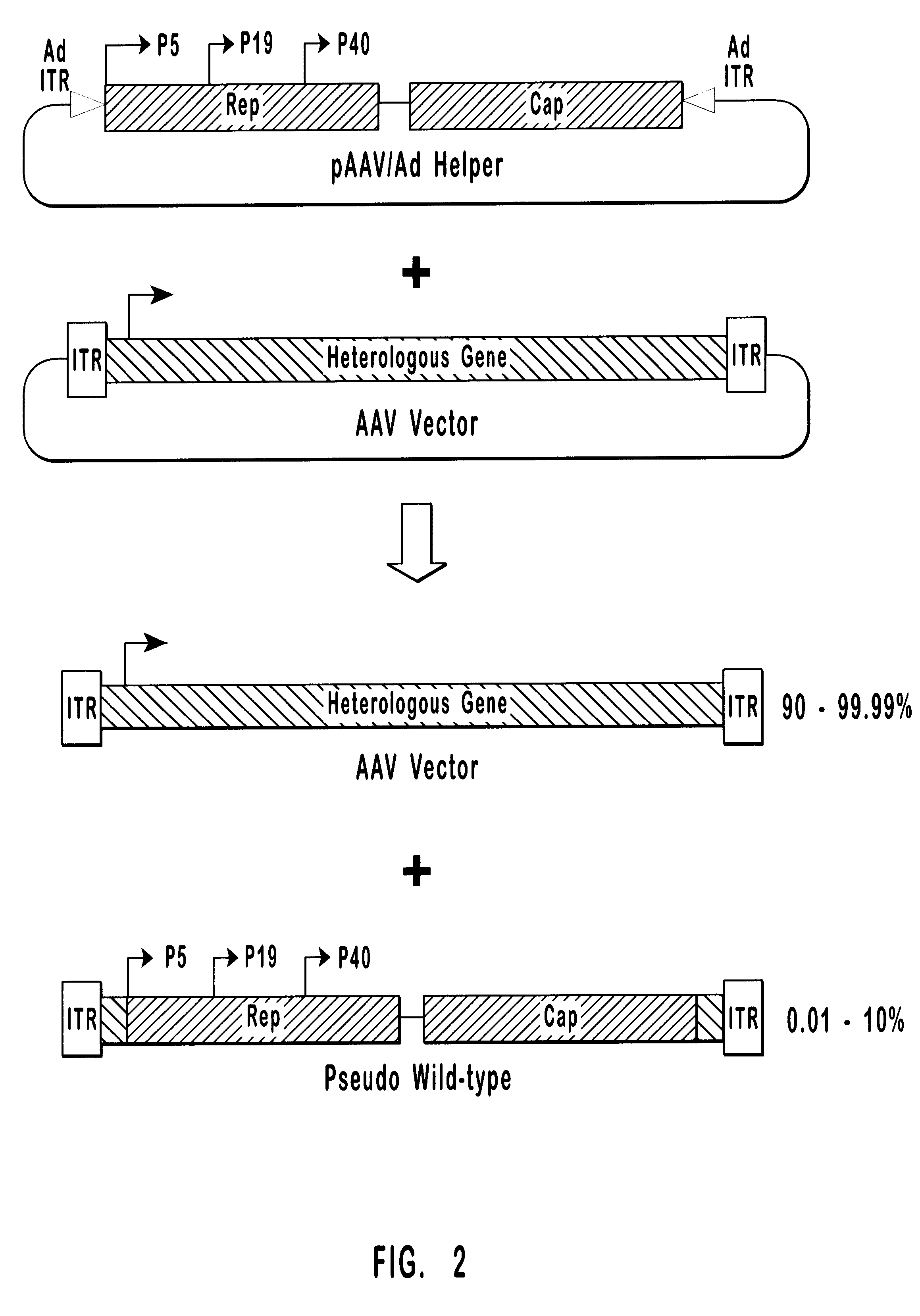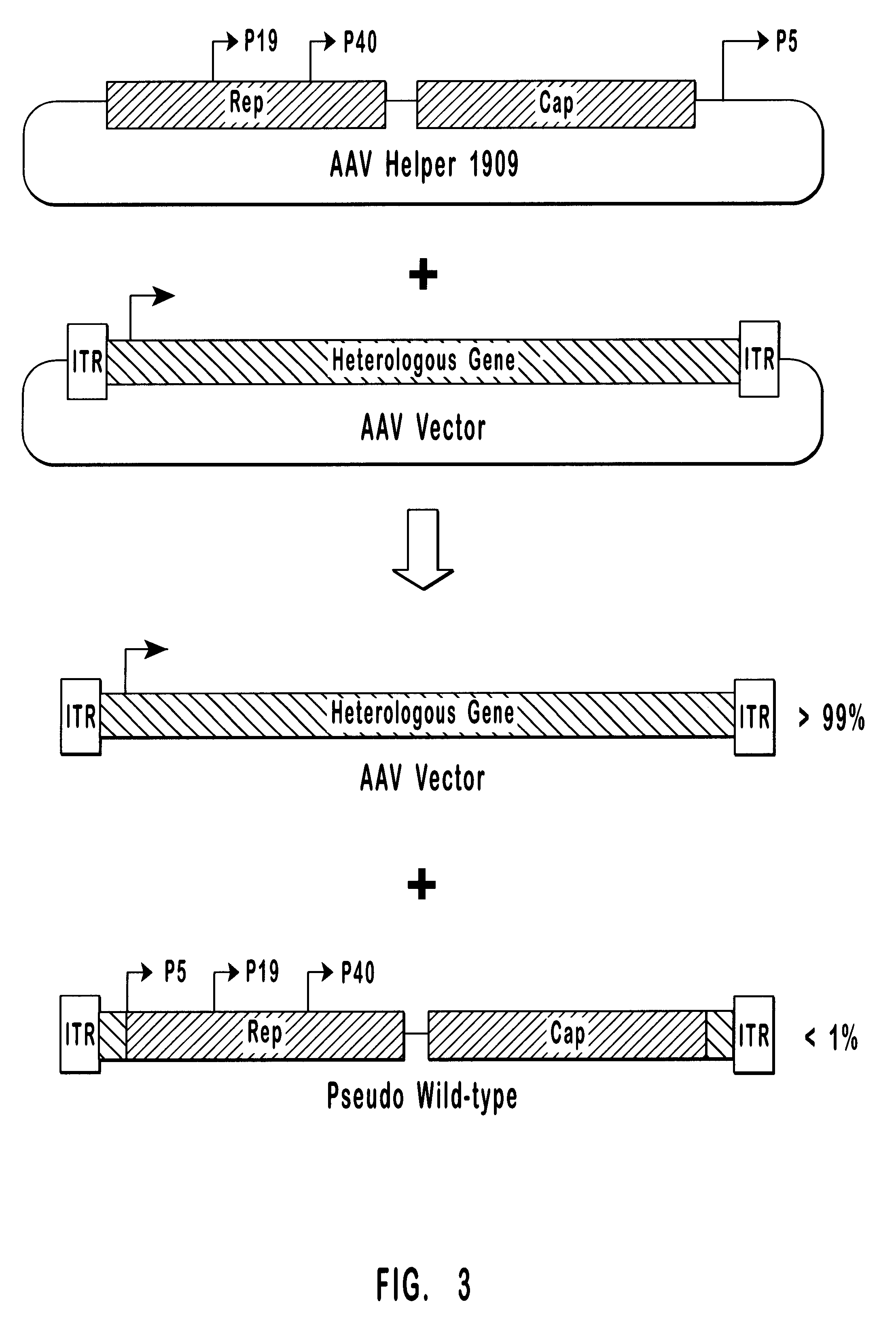High-efficiency wild-type-free AAV helper functions
- Summary
- Abstract
- Description
- Claims
- Application Information
AI Technical Summary
Benefits of technology
Problems solved by technology
Method used
Image
Examples
example 1
Wild-Type AAV Production
Plasmid Construction.
pW1909 has previously been described. See U.S. patent application Ser. No. 08 / 688,648, which is incorporated herein by reference. Briefly, as shown in FIG. 3, pW1909 comprises rep and cap coding regions and a downstream p5 promoter sanwiched between two Flip Recombination Target (FRT) sites.
Plasmid pHLP19 encodes a modified AAV-2 genome designed to enhance AAV vector production while suppressing the generation of replication-competent pseudo-wild-type virus. pHLP19 has the same general structure as pGN1909 described in U.S. Pat. No. 5,622,856, incorporated herein by reference. In both plasmids, the p5 promoter is moved to a position 3' of the cap gene and is replaced by a 5' untranslated region primarily composed of a FLP recombinase recognition sequence. Unlike pGN1909, which contains substantial regions of homology between the 3' and 5' ends of the AAV genome, pHLP19 was constructed so as to eliminate any such regions of homology. Addit...
PUM
| Property | Measurement | Unit |
|---|---|---|
| Time | aaaaa | aaaaa |
| Angle | aaaaa | aaaaa |
| Angle | aaaaa | aaaaa |
Abstract
Description
Claims
Application Information
 Login to View More
Login to View More - R&D
- Intellectual Property
- Life Sciences
- Materials
- Tech Scout
- Unparalleled Data Quality
- Higher Quality Content
- 60% Fewer Hallucinations
Browse by: Latest US Patents, China's latest patents, Technical Efficacy Thesaurus, Application Domain, Technology Topic, Popular Technical Reports.
© 2025 PatSnap. All rights reserved.Legal|Privacy policy|Modern Slavery Act Transparency Statement|Sitemap|About US| Contact US: help@patsnap.com



